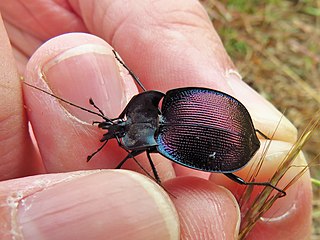Related Research Articles

The longfin boarfish, also known as the blackspot boarfish, is a species of marine ray-finned fish, an armourhead from the family Pentacerotidae which is native to the coasts of southern Australia, Tasmania and New Zealand. It can be found over the continental shelf and the continental slope at depths from 30 to 500 m. This species can reach a length of 33 cm (13 in). It can also be found in the aquarium trade, and is currently the only known member of the genus Zanclistius.
Lepetodrilus elevatus is a species of small, deep-sea sea snail, a hydrothermal vent limpet, a marine gastropod mollusk in the family Lepetodrilidae.

Amblypneustes elevatus is a species of sea urchin of the family Temnopleuridae. Their armour is covered with spines. It came from the genus Amblypneustes and lives in the sea.
Heliconius elevatus is a butterfly of the family Nymphalidae. It was described by Nöldner in 1901. It is found in the Amazon Basin. The habitat consists of riparian forests.
Morimopsini is a tribe of longhorn beetles of the subfamily Lamiinae. It was described by Lacordaire in 1869.
Monoxenus is a genus of longhorn beetles of the subfamily Lamiinae, containing the following species:
Monoxenus bicristatus is a species of beetle in the family Cerambycidae. It was described by Stephan von Breuning in 1939.
Monoxenus elongatus is a species of beetle in the family Cerambycidae. It was described by Stephan von Breuning in 1939.
Monoxenus spinosus is a species of beetle in the family Cerambycidae. It was described by Stephan von Breuning in 1939.
Monoxenus multituberculatus is a species of beetle in the family Cerambycidae. It was described by Stephan von Breuning in 1942.
Monoxenus nigrofasciaticollis is a species of beetle in the family Cerambycidae. It was described by Stephan von Breuning in 1967. It is known from Kenya. It feeds on Juniperus procera.
Monoxenus nigrovitticollis is a species of beetle in the family Cerambycidae. It was described by Stephan von Breuning in 1956.
Monoxenus tridentatus is a species of beetle in the family Cerambycidae. It was described by Per Olof Christopher Aurivillius in 1903 and is known from Cameroon.
Monoxenus balteatus is a species of beetle in the family Cerambycidae. It was described by Per Olof Christopher Aurivillius in 1903.
Monoxenus turrifer is a species of beetle in the family Cerambycidae. It was described by Per Olof Christopher Aurivillius in 1914.
Monoxenus bispinosus is a species of beetle in the family Cerambycidae. It was described by Karl Jordan in 1894, originally under the genus Apomempsis. It is known from Cameroon, Equatorial Guinea, Gabon, the Democratic Republic of the Congo, the Republic of the Congo, and the Central African Republic.

Tropiphorus elevatus is a species of broad-nosed weevil in the beetle family Curculionidae.

Argyrodes elevatus, commonly referred to as dew-drop spider, is part of the family Theridiidae that consists of more than 3,000 species. These spiders are most commonly found in subtropical and tropical regions in South and Central America, as well as southern regions of the United States. One of the key distinguishing characteristics of A. elevatus is its kleptoparasitic behavior through which it primarily procures food for survival. Typically 1 or 2 A. elevatus spiders preside in outer areas of webs built by other species of spiders, although it is possible for up to 45 spiders. There are two main mechanisms by which A. elevatus raid the hub of the host’s web to steal insects preyed and wrapped by the host spider. A. elevatus follows an intricate course to the hub of the web to search for prey, using vibrational detection enhanced by laid out threads along the web to find and capture the insect. These spiders are highly efficient, with the theft lasting a maximum of 12 seconds and high success rates. This reliance on a host spider for food has led to adaptations in sleep schedules and alternate food sources to revolve around the host species activity. A. elevatus display a unique courtship routine in which male A. elevatus presents prey wrapped in silk as a nuptial gift to the female spider. The male spider approaches the female, carrying the nuptial gift on its chelicerae while communicating with a distinct courting vibration, followed by copulation. Approximately twenty-four hours after the A. elevatus courtship and copulation series of events, the female spider will lay one to two eggs on the outer regions of the host's web.
Gyrinus elevatus is a species of whirligig beetle in the family Gyrinidae. It is found in North America.

Scaphinotus elevatus, the eastern snail eater, is a species of ground beetle in the family Carabidae. It is found in North America.
References
- ↑ BioLib.cz - Monoxenus elevatus. Retrieved on 8 September 2014.